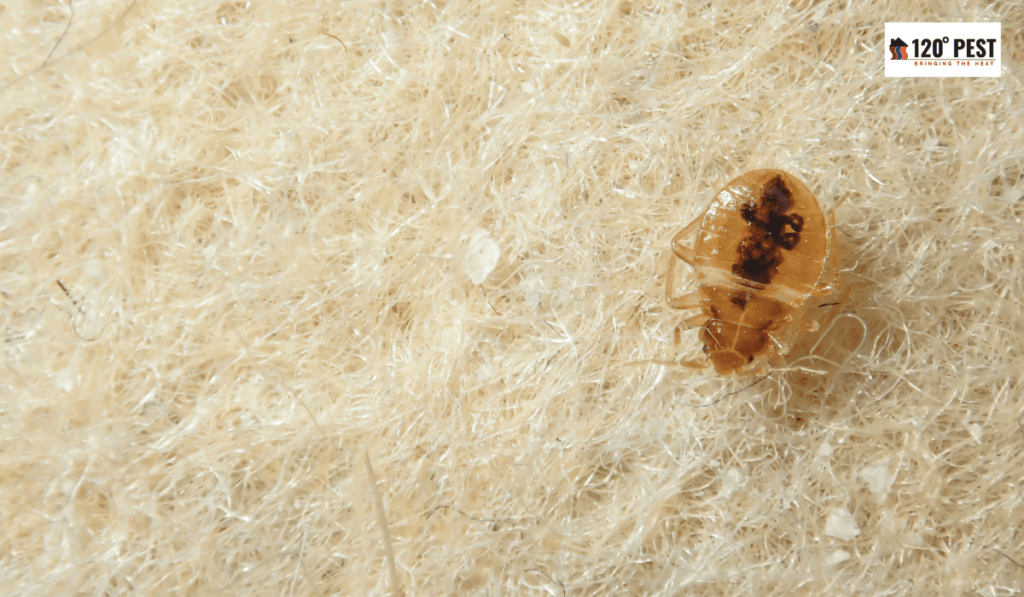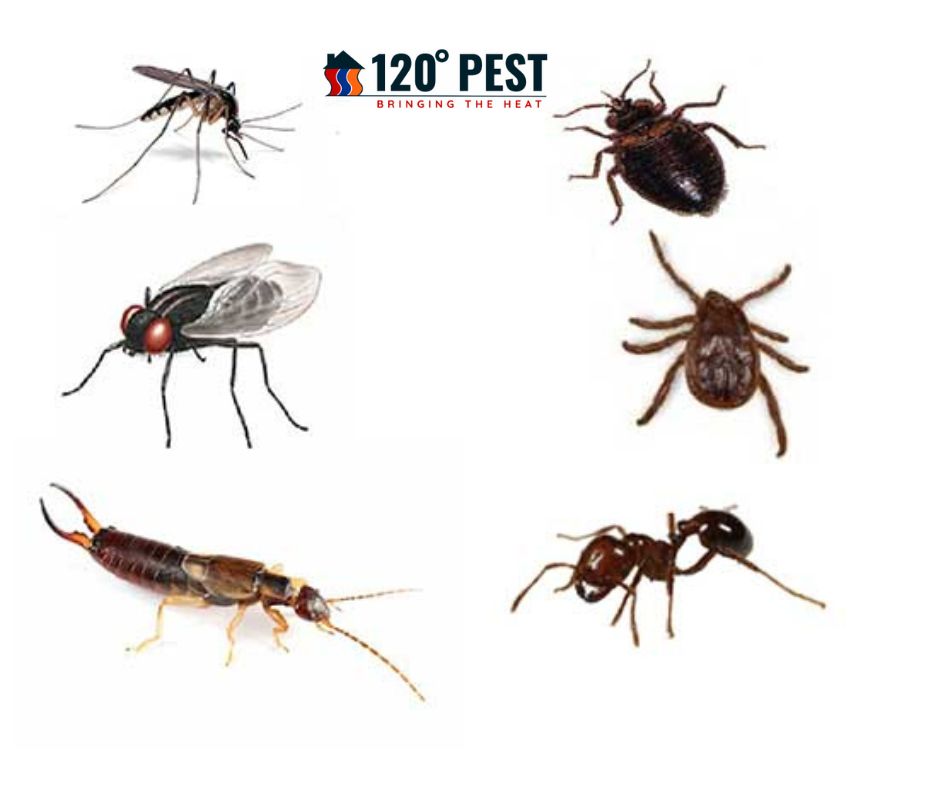Household pests are an unfortunate reality for many homeowners. Whether they crawl, fly, or scuttle, these unwelcome visitors can cause annoyance, damage, and even health hazards if left unchecked. From tiny ants marching across kitchen counters to elusive mice seeking shelter in walls, each pest comes with its own set of challenges. However, with the right strategies and preventive measures, you can effectively manage and eliminate these pests from your home. In this article, we’ll explore the top five most common household pests and provide practical tips on how to deal with them.
Ants:
Ants are one of the most prevalent household pests worldwide, with species like the odorous house ant, pavement ant, and carpenter ant commonly invading homes. They are attracted to food sources and can quickly establish colonies indoors, especially in warm weather. To deal with ant infestations:
- Keep your kitchen clean and free of crumbs or spills that may attract ants.
- Seal cracks and crevices around doors, windows, and entry points to prevent their entry.
- Use ant baits or ant traps strategically placed near ant trails or entry points.
- Consider professional pest control services for severe infestations.
Cockroaches:
Cockroaches are notorious for their resilience and ability to thrive in various environments. They carry pathogens that can contaminate food and surfaces, posing health risks to humans. Common species include the German cockroach, American cockroach, and Oriental cockroach. To combat cockroach infestations:
- Maintain cleanliness by regularly vacuuming and wiping down surfaces.
- Store food in airtight containers and promptly clean up spills.
- Seal cracks and openings in walls, floors, and cabinets to deny them hiding places.
- Use cockroach baits or insecticide sprays targeted at cockroach harborage areas.
- Consider professional extermination services for severe infestations.
Rodents (Mice and Rats):
Mice and rats are not only a nuisance but also carriers of diseases such as salmonella and leptospirosis. They can chew through walls, wires, and insulation, causing structural damage and fire hazards. To prevent and control rodent infestations:
- Seal gaps and holes in walls, floors, and foundations to deny them entry.
- Keep food stored in rodent-proof containers and clean up food crumbs promptly.
- Set traps or use bait stations strategically along rodent runways and nesting sites.
- Maintain outdoor cleanliness by removing clutter and debris that may attract rodents.
- Consider professional rodent control services for persistent infestations.
Bed Bugs:

Bed bugs have made a resurgence in recent years, infesting homes, hotels, and other dwellings worldwide. These nocturnal parasites feed on human blood and can cause itching, allergic reactions, and sleep disturbances. To tackle bed bug infestations:
- Wash bedding, linens, and clothing in hot water and dry them on high heat to kill bed bugs.
- Vacuum mattresses, bed frames, and furniture thoroughly, paying attention to seams and crevices.
- Use mattress encasements and bed bug interceptors to prevent bed bugs from accessing your bed.
- Consider professional bed bug extermination services, which may involve heat treatments or pesticide application.
Termites:
Termites are silent destroyers, feeding on wood, paper, and other cellulose-based materials found in homes. They can cause extensive damage to structures if left unchecked. Common signs of termite infestation include mud tubes, damaged wood, and discarded wings. To prevent and control termite infestations:
- Schedule regular inspections by a licensed pest control professional to detect early signs of termite activity.
- Keep soil away from wooden structures and ensure proper drainage to prevent moisture buildup.
- Remove dead wood, tree stumps, and other cellulose materials from around your home.
- Consider installing termite bait stations or applying liquid termiticides around your property as a preventive measure.
- If termite infestation is confirmed, consult with a professional for targeted treatment options such as liquid termiticide application or termite baiting systems.
Flies:
Flies are not only a nuisance but also vectors for diseases such as salmonella, E. coli, and cholera. Common species include house flies, fruit flies, and blowflies. They are attracted to decaying organic matter, garbage, and food waste, making kitchens and waste disposal areas prime breeding grounds. To address fly infestations:
- Dispose of garbage regularly and keep trash cans clean with tightly sealed lids.
- Clean drains and sink pipes to remove organic matter where flies breed.
- Use fly traps or fly baits strategically placed near breeding sites or entry points.
- Install screens on doors and windows to prevent flies from entering the home.
- Consider using ultraviolet light traps or electronic fly zappers for larger infestations.
Spiders:
While most spiders found in homes are harmless, their presence can still be unsettling for many people. However, some species, like the brown recluse or black widow, pose health risks with their venomous bites. To manage spider populations:
- Keep indoor spaces clutter-free to eliminate hiding places for spiders.
- Regularly dust and vacuum corners, ceilings, and other spider-prone areas.
- Seal cracks and gaps in walls, windows, and doors to prevent spiders from entering.
- Use spider repellents or natural deterrents such as citrus peels or essential oils.
- Remove outdoor debris and vegetation close to the home to reduce spider habitats.
Silverfish:
Silverfish are small, wingless insects known for their silvery appearance and rapid movements. They feed on starchy materials like paper, cardboard, and clothing, causing damage to books, wallpaper, and fabric. To control silverfish infestations:
- Reduce humidity levels in the home by using dehumidifiers or improving ventilation.
- Store paper goods, clothing, and other susceptible items in airtight containers.
- Seal cracks and crevices in walls, baseboards, and plumbing fixtures to deny silverfish entry.
- Use insecticidal dust or spray treatments in areas where silverfish are active.
- Remove clutter and debris, especially in dark, damp areas where silverfish thrive.
Fleas:
Fleas are common household pests, especially in homes with pets. These blood-sucking parasites can infest carpets, bedding, and upholstery, causing itching and discomfort for both humans and animals. To tackle flea infestations:
- Wash pet bedding and vacuum carpets and upholstery regularly to remove flea eggs and larvae.
- Treat pets with flea control products recommended by a veterinarian.
- Use flea control products such as insecticide sprays or foggers in infested areas.
- Launder clothing and bedding in hot water to kill fleas and their eggs.
- Consider professional flea extermination services for severe infestations, especially in multi-pet households.
Conclusion
In conclusion, household pests come in various shapes and sizes, each presenting its own set of challenges for homeowners. By familiarizing yourself with the most common pests and implementing preventive measures and effective control strategies, you can minimize the risk of infestations and protect your home and family. Remember to maintain cleanliness, seal entry points, and address moisture issues to deter pests from taking up residence in your home. Additionally, don’t hesitate to seek professional pest control assistance if needed to ensure thorough eradication and long-term pest management. With diligence and persistence, you can keep your home pest-free and enjoy a healthier, more comfortable living environment. For expert pest control services, contact us at 120 Pest today!
FAQs
How do I deal with ant infestations in my home?
Ant infestations can be managed by keeping your kitchen clean, sealing entry points, using ant baits or traps, and, in severe cases, considering professional pest control.
What are effective methods for combating cockroach infestations?
Combat cockroach infestations by maintaining cleanliness, storing food properly, sealing cracks, using cockroach baits or sprays, and seeking professional extermination for severe infestations.
How can I prevent and control rodent infestations in my home?
Prevent rodent infestations by sealing entry points, storing food in rodent-proof containers, setting traps or bait stations strategically, maintaining outdoor cleanliness, and considering professional rodent control services.
What are the best strategies for tackling bed bug infestations?
Tackle bed bug infestations by washing bedding in hot water, vacuuming thoroughly, using mattress encasements and interceptors, and considering professional extermination services, including heat treatments or pesticide application.
How can I prevent and control termite infestations in my home?
Prevent termite infestations with regular inspections, proper drainage to prevent moisture buildup, removal of cellulose materials, and installation of termite bait stations or liquid termiticides. If infestation is confirmed, consult professionals for targeted treatment options.
What are effective methods for addressing fly infestations in my home?
Address fly infestations by disposing of garbage regularly, cleaning drains, using fly traps or baits, installing screens on doors and windows, and considering ultraviolet light traps or electronic fly zappers for larger infestations.
How can I manage spider populations in my home?
Manage spider populations by keeping indoor spaces clutter-free, regular dusting and vacuuming, sealing entry points, using spider repellents or natural deterrents, and removing outdoor debris and vegetation close to the home.
What are effective strategies for controlling silverfish infestations?
Reduce humidity levels, store susceptible items in airtight containers, seal entry points, use insecticidal treatments, and remove clutter and debris, especially in damp areas, to control silverfish infestations.
How do I tackle flea infestations, especially in homes with pets?
Tackle flea infestations by washing pet bedding, treating pets with flea control products, using insecticide sprays or foggers, laundering clothing and bedding in hot water, and considering professional flea extermination services for severe infestations.
What are some preventive measures to avoid attracting household pests in the first place?
To prevent attracting household pests, keep your home clean and tidy, store food properly in sealed containers, seal entry points such as cracks and crevices, maintain proper drainage to prevent moisture buildup , and remove outdoor clutter and debris. Additionally, regular inspections and maintenance can help identify and address potential pest entry points and infestations early on.




